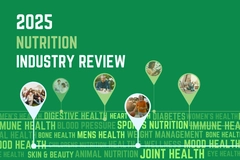
- Industry news
Industry news
- Category news
- Reports
- Key trends
- Multimedia
Multimedia
- Journal
- Events
- Suppliers
Suppliers
- Home
- Industry news
Industry news
- Category news
- Reports
- Key trends
- Multimedia
Multimedia
- Events
- Suppliers
Suppliers
Ceres2030 calls for US$330bn extra funding to end global hunger

13 Oct 2020 --- Approximately US$330 billion is needed in additional funding over the next decade to end global hunger by 2030, requiring the donor community to double its current spending.
Using artificial intelligence (AI) to scan half a million research papers on investment funding, the newly published Ceres2030: Sustainable Solutions to End Hunger report has found that doubling financial aid could also result in doubled incomes of smallholder farmers and limited agricultural emissions in line with the Paris climate agreement.
“Producing food is not enough. The world, even this year, has plenty of food. Providing access to this food is another challenge: people need income in the form of purchasing power. The system needs infrastructure – roads, airports and food safety inspectors – to operate,” David Laborde, co-director of Ceres2030 and senior research fellow at the International Food Policy Research Institute (IFPRI), tells NutritionInsight.
The Ceres2030 partners include IFPRI, the International Institute for Sustainable Development (IISD) and Cornell University. Funding support came from Germany’s Federal Ministry of Economic Cooperation and Development and the Bill & Melinda Gates Foundation.
 Laborde highlights the report does not outline a utopic future to policymakers but rather a set of concrete solutions and a strategic plan to achieve the goals.“Old policies focusing on producing more [staples] are a dead-end if you do not address the various aspects of the system. Governments more than ever have to play a critical role in their mission of providing public goods, redistributive policies and safety nets,” he continues.
Laborde highlights the report does not outline a utopic future to policymakers but rather a set of concrete solutions and a strategic plan to achieve the goals.“Old policies focusing on producing more [staples] are a dead-end if you do not address the various aspects of the system. Governments more than ever have to play a critical role in their mission of providing public goods, redistributive policies and safety nets,” he continues.
Ten recommendations
Aiming to provide the donor community with “a menu of policy options” for directing investments, the report further outlines recommendations throughout three categories. “Empower the Excluded,” “On the Farm” and “Food on the Move” stipulate ten main ways to ensure change throughout the food supply chain.
To “empower the excluded,” social protection programs should be scaled up and rural youth need vocational programs that offer integrated training in multiple skills.
Agriculture interventions to support sustainable practices must be economically viable “on the farm.” Meanwhile, increased research on water-scarce regions and improved livestock feed is needed.
With “food on the move,” expanding interventions beyond cereal storages can help reduce post-harvest losses.
Doubling investment
The private and public donor community is being called upon to add US$14 billion to their current annual US$12 billion investments in ending global hunger by 2030, the UN’s second Sustainable Development Goal (SDG).
Moreover, official development assistance alone will not be enough to achieve SDG 2. Additional public spending of US$19 billion per year on average until 2030 will have to be provided by low- and middle-income countries through increased taxation.
“[Ending hunger] in a sustainable way, environmentally and economically, will not only benefit the hungry and the poor. Addressing the climate footprint of growing food demand, generating income to alleviate rural poverty, and in particular among the rural African youth, is fundamentally a win-win outcome.”
AI digs deep into agricultural research
Notably, the Ceres2030 report used an AI tool to analyze half a million articles from the last two decades.
 Insisting on inclusiveness in the agricultural sector, Laborde urges avoiding excluding smallholders from economic and technological evolution.“The tool helped us identify the 10,000 most relevant articles, from which we could then draw valuable conclusions about what works to end hunger,” says Jaron Porciello, associate director at Cornell University.
Insisting on inclusiveness in the agricultural sector, Laborde urges avoiding excluding smallholders from economic and technological evolution.“The tool helped us identify the 10,000 most relevant articles, from which we could then draw valuable conclusions about what works to end hunger,” says Jaron Porciello, associate director at Cornell University.
“This approach could be replicated to build a scientific evidence base for many of the world’s most complex policy problems. We urge governments to use our findings to ensure their aid spending is as effective as possible.”
Laborde adds that using AI in research still requires proper design, use and critical assessment. “The world will not be saved with ‘Big Data’ and AI without the appropriate ‘Big Theori(es).’ The tools are promising but how to train researchers [worldwide] to use them is an important challenge ahead.”
COVID-19 shifts Goal 2 off track
In July, Ceres2030 researchers flagged that an additional US$10 billion is urgently needed to prevent millions of more people from becoming food insecure due to the COVID-19 pandemic.
“The world has known and will know crisis. For developing economies, [agricultural development] is a source of economic stability that should not be neglected. It also has an incredible capacity to deliver on poverty reduction, and making sure that when the next crisis will come, the poor will be less poor, and that a few weeks of social distancing will not threaten their economic survival,” Laborde asserts.
 “We need to act now. The more we wait, the more expansive the solution will be.”“If we do not act now, we predict that a further 95 million will go hungry in 2020, [representing] a dramatic 14 percent spike in the number of hungry compared to last year,” Carin Smaller, co-director of Ceres2030, previously shared with NutritionInsight.
“We need to act now. The more we wait, the more expansive the solution will be.”“If we do not act now, we predict that a further 95 million will go hungry in 2020, [representing] a dramatic 14 percent spike in the number of hungry compared to last year,” Carin Smaller, co-director of Ceres2030, previously shared with NutritionInsight.
Ceres2030 calls for “action now”
With enough information to know what to do – and not do – Laborde warns that thinking that policymakers need more research before making a decision is a “dangerous misunderstanding” of the role of social sciences and public decision making.
“For most natural sciences, the laws of nature do not change over time. Gravity is gravity and the amount of energy we need to send a probe to the moon has not changed since Newton. Of course, we took time to do the maths and find the practical solutions, but the why, what, and how were pretty constant,” he continues.
“This is not the case in social sciences, and in particular, economics. The problem evolves in its nature and magnitude. Human behaviors change, adapt, anticipate or reject policies. Our best solutions for yesterday’s problems and yesterday’s world will become outdated, inefficient or irrelevant,” he flags.
By Anni Schleicher











